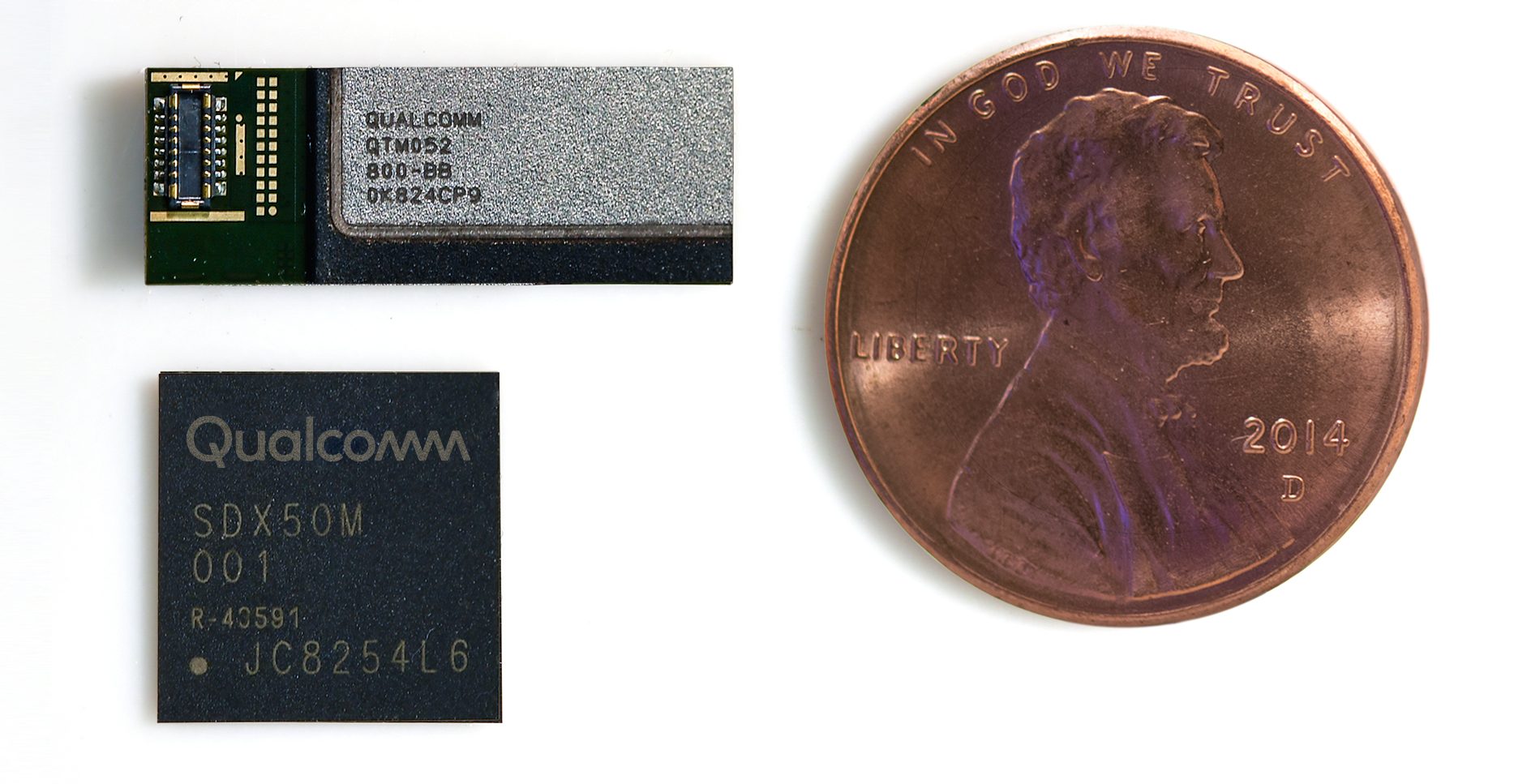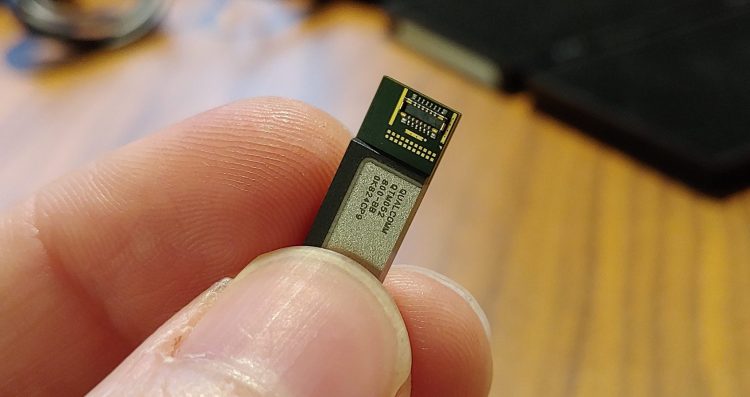With the launch of next-generation 5G cellular networks now only months away in the United States, South Korea, and possibly other countries, Qualcomm is today debuting two critically important new “modem-to-antenna” components: the world’s first fully integrated, mobile device-ready 5G millimeter wave (mmWave) antenna modules and sub-6 GHz RF modules. The parts will enable even smartphones to connect to upcoming 5G mmWave networks, an engineering feat that was once considered impossible.
Qualcomm’s QTM052 mmWave antenna modules and QPM56xx sub-6 GHz RF modules are each designed to work with Qualcomm’s Snapdragon X50 5G modem, addressing different radio frequencies. The mmWave antenna can be used on 26.5-29.5 GHz, 27.5-28.35 GHz, or 37-40 GHz bands, while the sub-6 GHz module works on 3.3-4.2 GHz, 3.3-3.8 GHz, or 4.4-5.0 GHz bands. Each country’s regulators are currently in the process of determining which mmWave and sub-6 GHz bands will be used for 5G services within their borders.

Above: Qualcomm’s mmWave antenna and X50 modem enable pocket devices to achieve ultra-fast 5G speeds, achieving once-inconceivable miniaturization.
While the sub-6 GHz module uses radio frequencies similar to existing wireless phones, the mmWave module is a significant breakthrough. Qualcomm notes that mmWave was once written off as too difficult to engineer into mobile devices, due to challenges with “materials, form-factor, industrial design, thermals, and regulatory requirements for radiated power.” But engineers saw its potential to speed up 5G networks, and persisted until they solved the engineering issues. As Qualcomm president Cristiano Amon explains,
Today’s announcement of the first commercial 5G NR mmWave antenna modules and sub-6 GHz RF modules for smartphones and other mobile devices represents a major milestone for the mobile industry … These type of modem-to-antenna solutions, spanning both mmWave and sub-6 spectrum bands, make mobile 5G networks and devices, especially smartphones, ready for large scale commercialization. With 5G, consumers can expect gigabit-class Internet speeds with unprecedented responsiveness in the palm of their hands, which stand to revolutionize the mobile experience.
To deliver high throughput in dense urban areas and crowded indoor environments, QTM052 supports up to 800MHz of bandwidth, using advanced beam forming, beam steering, and beam tracking technologies to improve mmWave signaling. The module includes a 5G radio transceiver, power management IC, RF front-end, and phased antenna array, working with the Snapdragon X50 modem as a complete system.
June 5th: The AI Audit in NYC
Join us next week in NYC to engage with top executive leaders, delving into strategies for auditing AI models to ensure fairness, optimal performance, and ethical compliance across diverse organizations. Secure your attendance for this exclusive invite-only event.
Interestingly, up to four QTM052 modules can be placed in a single smartphone to improve the device’s resistance to signal attenuation and other interference. This provides OEMs with a brute-force alternative to get their first high-speed 5G devices on the market by early 2019, while letting engineers continue to work on more streamlined second-generation models.

Above: Qualcomm expects that some manufacturers will place four mmWave antenna modules in one housing to avoid signal loss.
By contrast, the sub-6 GHz module family — spanning the QPM5650, QPM5651, QDM5650, and QDM5652 — will enable devices to access 5G networks in less densely populated, non-urban areas. While all four of these modules support the same sub-6 GHz bands, the P versions contain power amplifiers, while the D versions offer diversity support. They’re all designed to support massive MIMO transmissions, which use multiple antennas to achieve high data rates.
Qualcomm says that all of the new components are currently sampling to customers. They are expected to appear in the first 5G smartphones early next year, though Qualcomm has previously said that it’s working to assist some customers with device launches before then.


